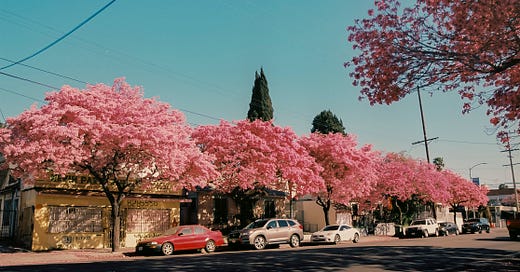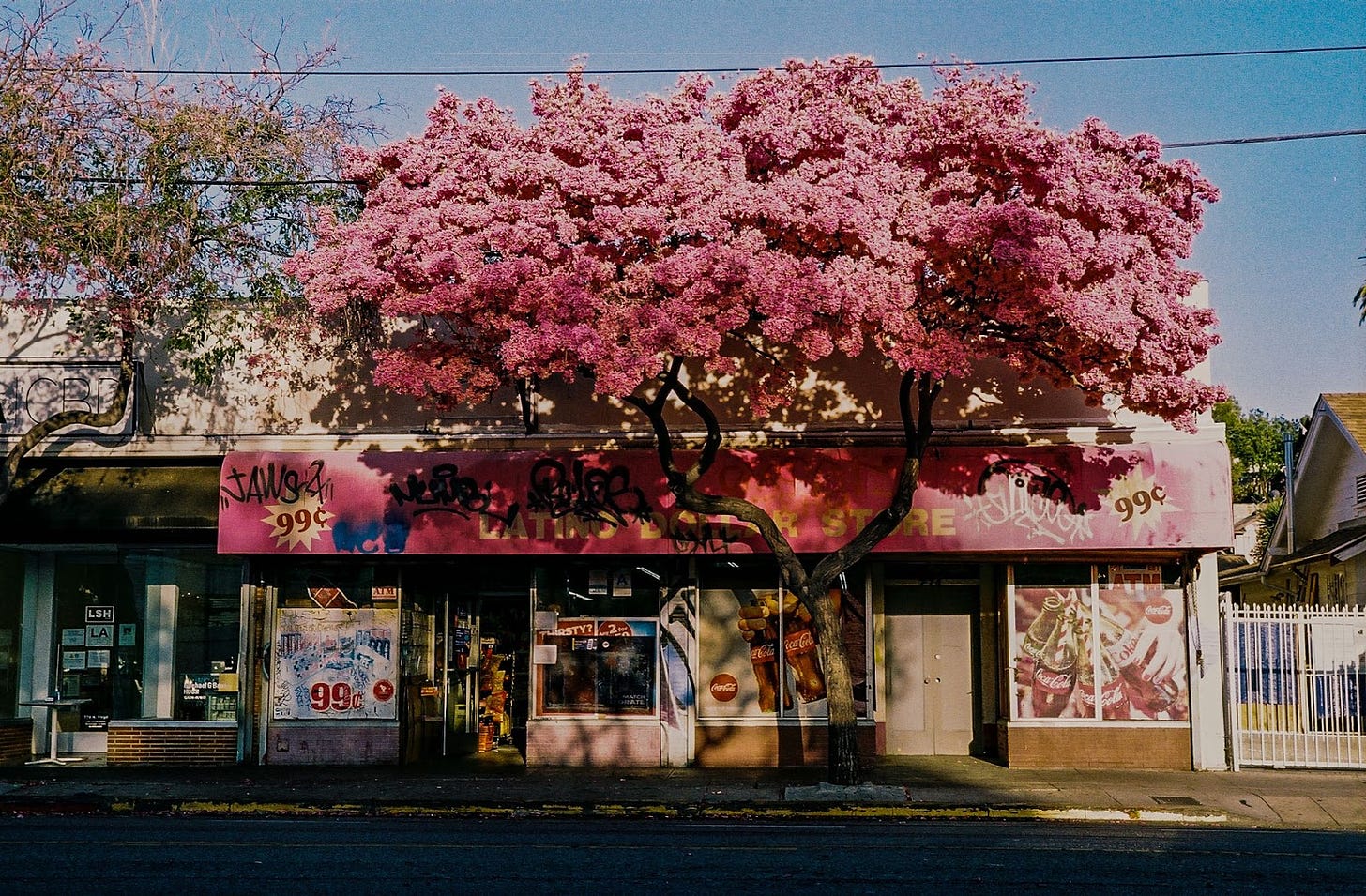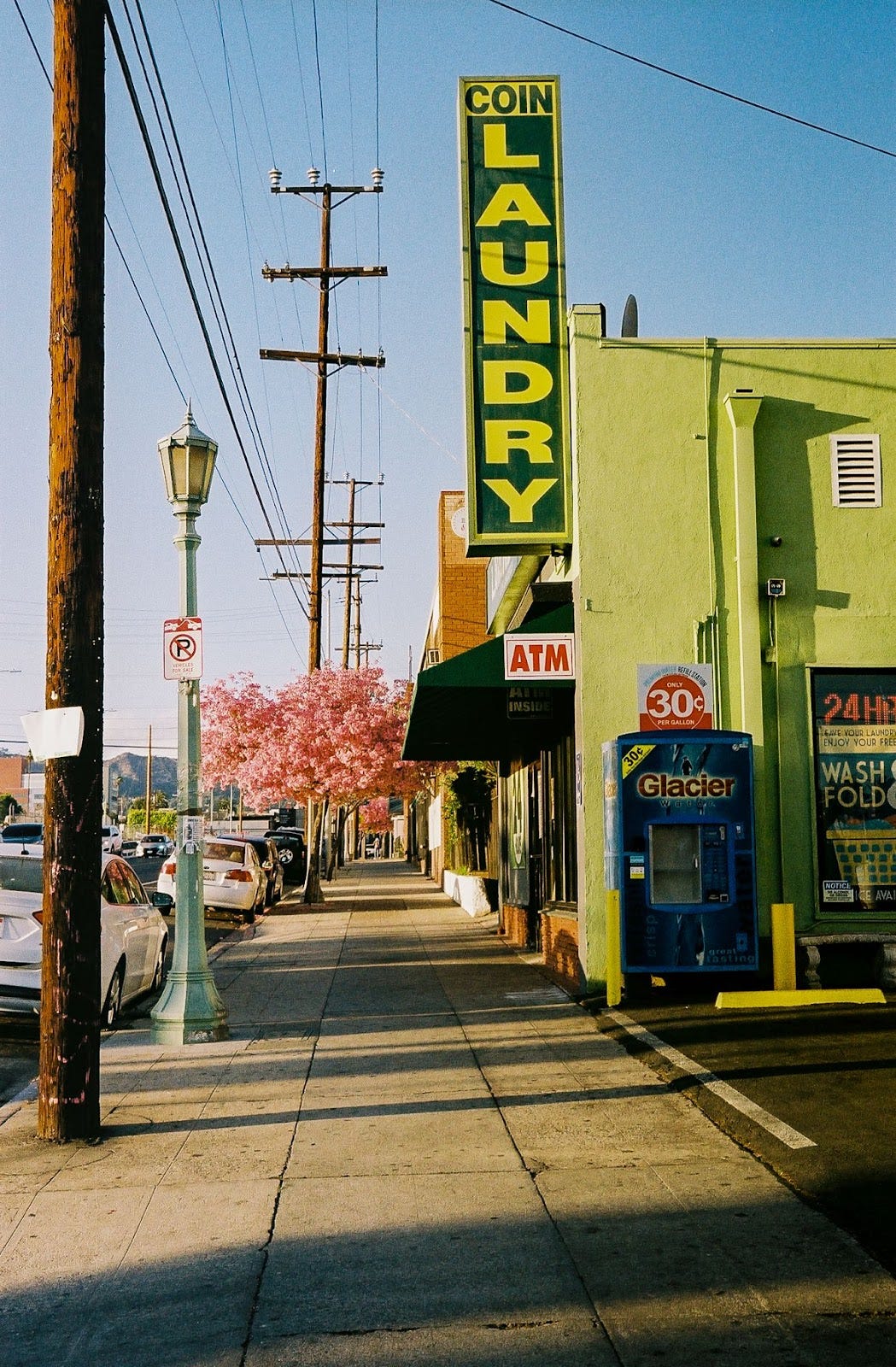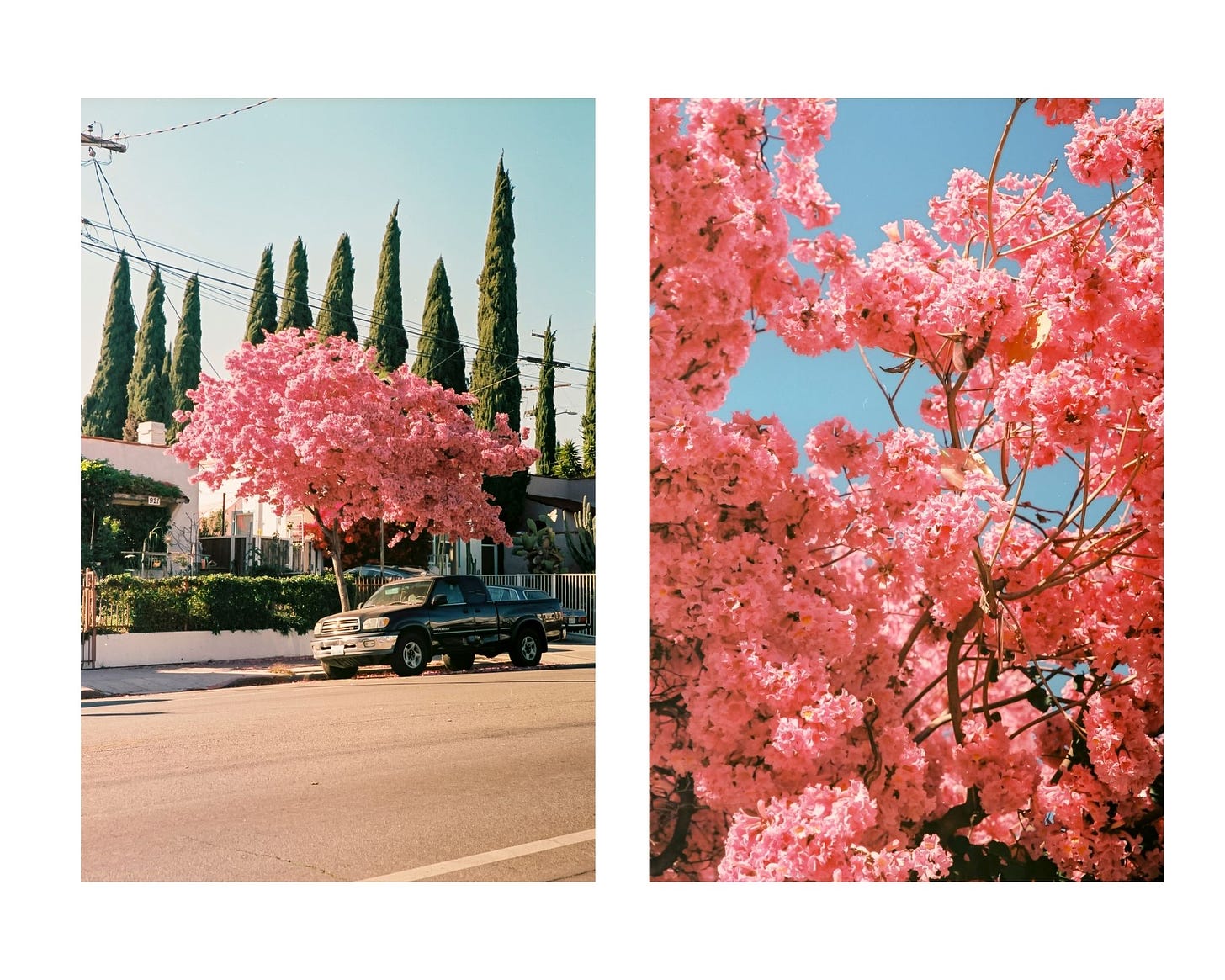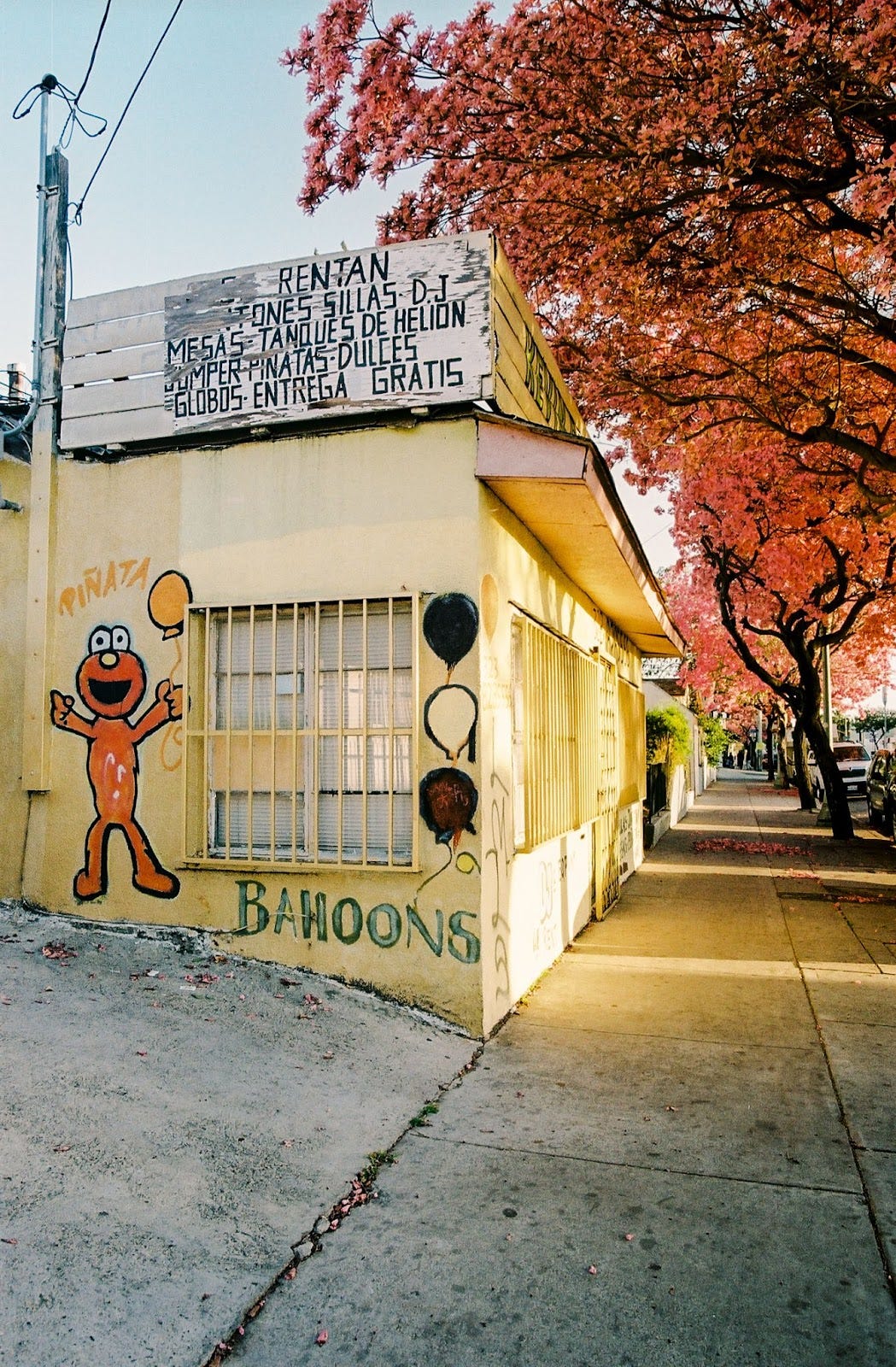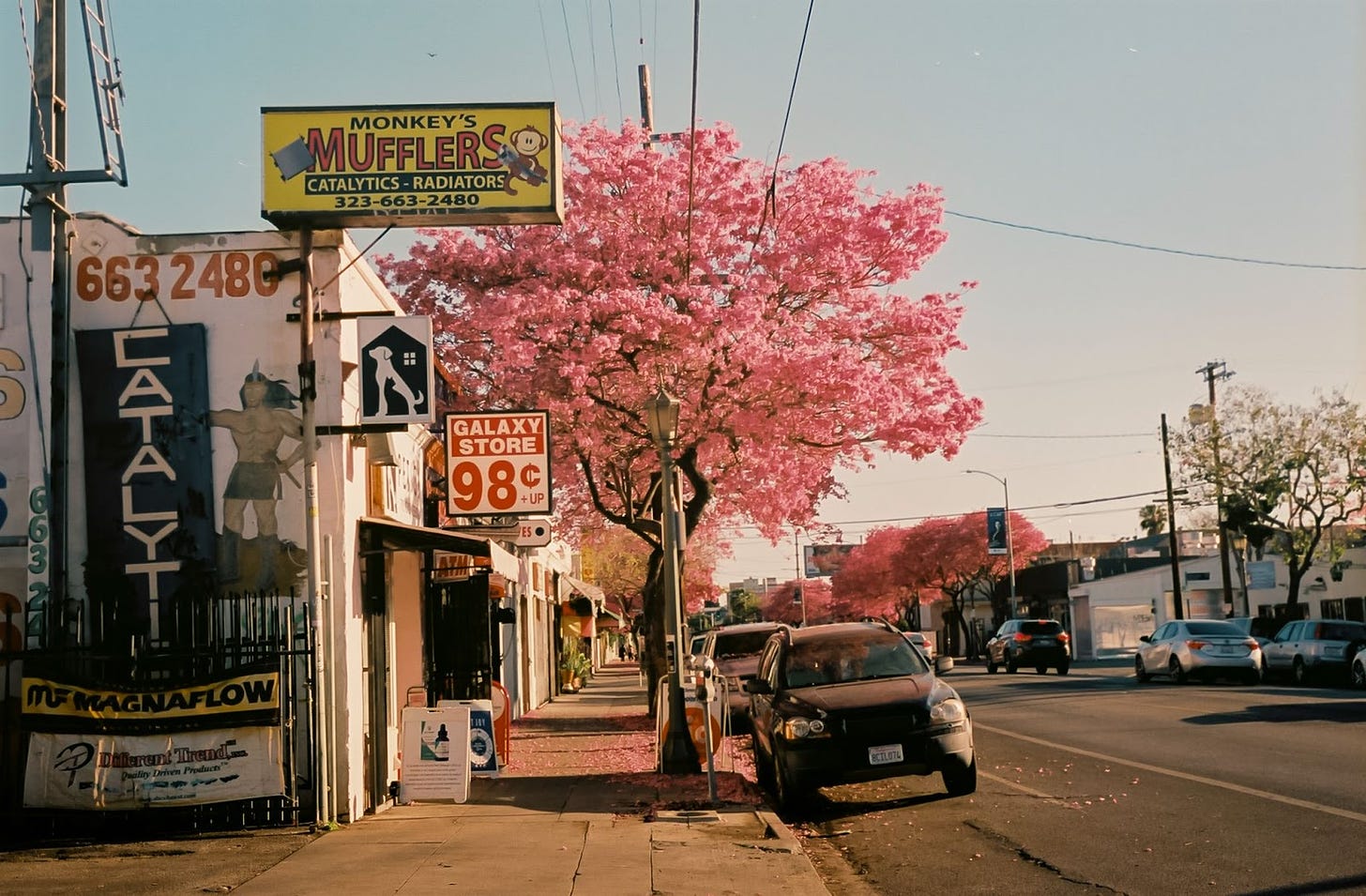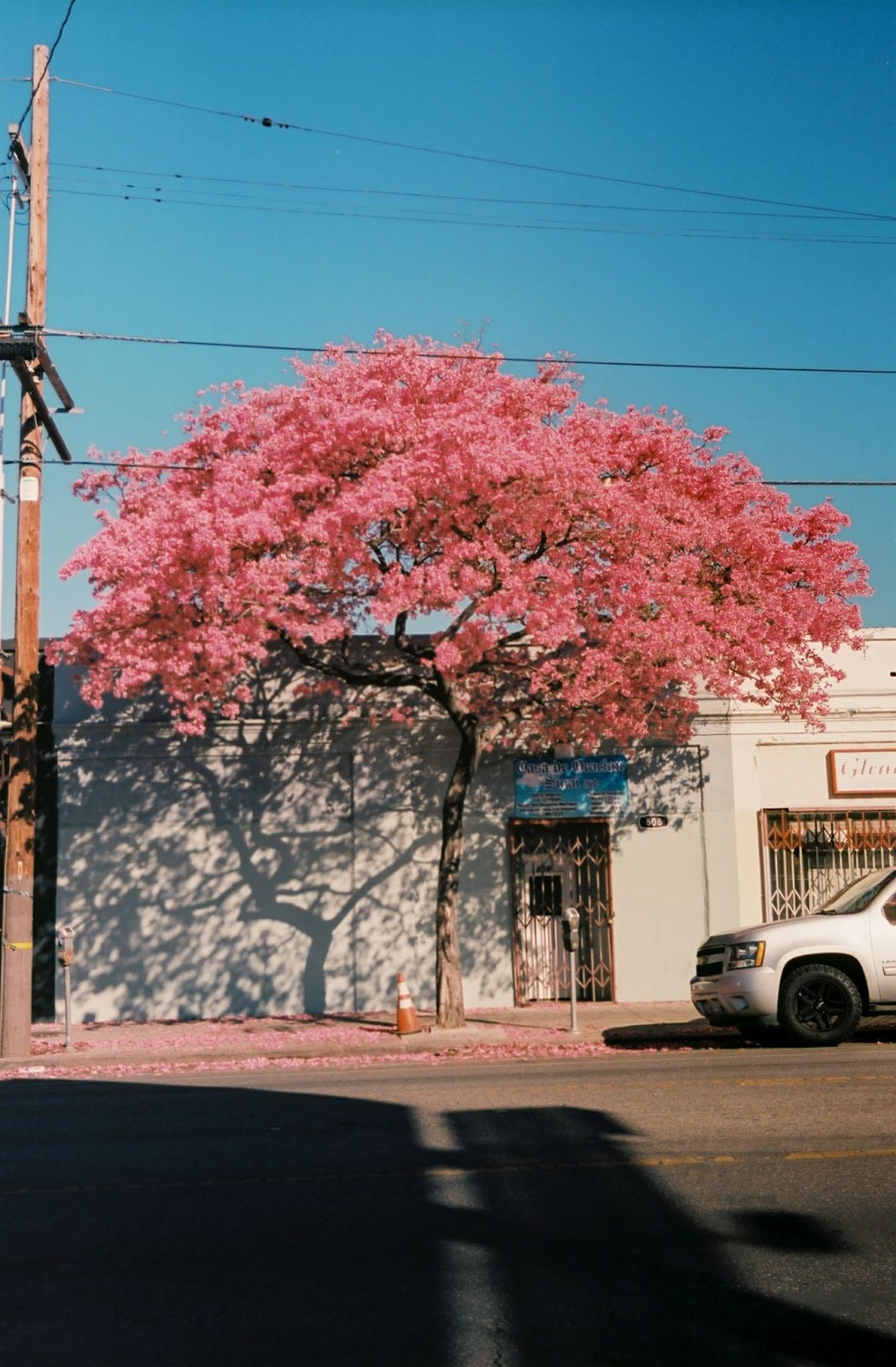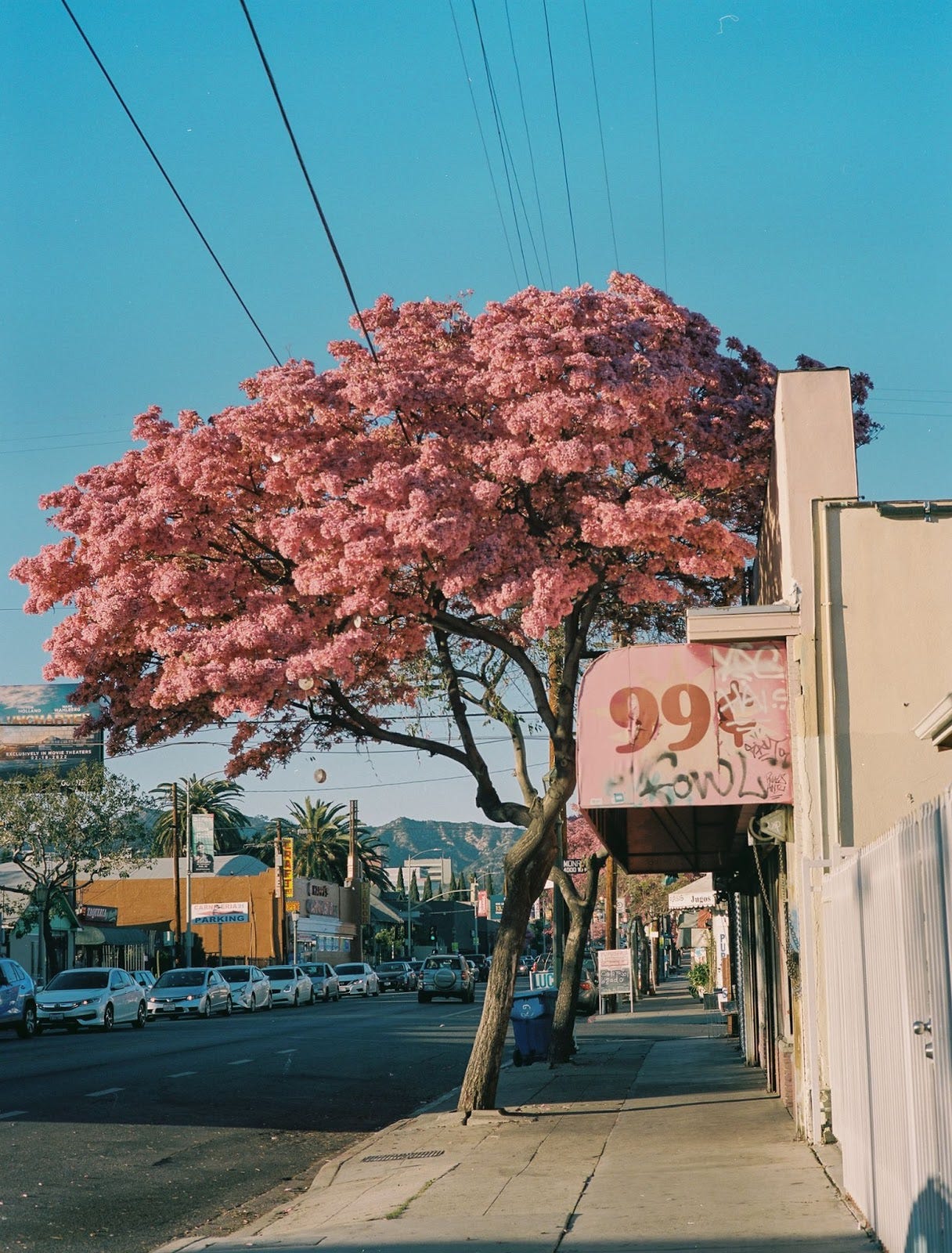A Flower's Bloom: The Story Behind Virgil Avenue's Bright Pink Trumpet Trees
A visual ode to the neighborhood's yearly trumpet tree bloom and the story of how neighbors came together in the 90s to create beauty for each other
Is there anything sweeter than walking down Virgil Avenue at golden hour when the trumpet trees are in full bloom? Their flowers, spot-lit by the sun’s orange light, swaying in the wind, casting dancing shadows on colorful storefronts. Or the way the Latino Discount store’s pink awning seems to have been made to match the flower’s color perfectly.
From afar, the street looks lined in bright pink clouds floating in place. Reality feels suspended, as if you’re in the middle of a fantastical dream. Our own little paradise.
This particular phenomenon happens only once a year. Usually from late February until mid-March. But just as quickly as the bloom shows up—seemingly from one week to another—it’s gone by the end of March. Before you’re able to take this colorful spectacle for granted, dead flowers pile up on the ground, and the trees go back to looking unremarkably green as summer approaches.
Virgil Village, a neighborhood within East Hollywood, has many quirks: a beehive inside the base of a tree on the corner of Willow Brook and Virgil Avenue, the man who befriends seagulls and pigeons in front of the Cahuenga library on Santa Monica Boulevard, or the banana trees in a bungalow court that transports you to the tropics. But the pink-flowered trees along the neighborhood’s main artery feel particularly singular to this place. They’ve become a point of pride. The neighborhood, which I appreciate for its grounding elements—Latinx families, hand-painted signage that reminds me of my native Mexico, neighbors that wave when I pass by—turns into a dreamscape for which I have no comparison.
In the five years I’ve spent reporting on gentrification in this neighborhood, I’ve heard a similar opinion from some longtime residents: they often say that the changes that come with gentrification are positive because there’s more lighting and the streets feel safer and cleaner. But often those very same people are displaced, learning the bitter truth, that those beautifications were not meant for them but rather for a more monied demographic moving in. Yet, the trumpet trees have lived here since 1995, before Sqirl and the rapid gentrification. It was beauty that was meant to be for and by the working class immigrants who made this neighborhood what it is.
The story of how these trees came to be starts with one person: Jenette Goldstein.
It was 1986 and Jenette, an actor in her mid-20s, was in the market for a house when she came upon an old estate on Marathon Street in what is now known as Virgil Village. The property was formerly owned by the Salazars, a wealthy Hispano ranching family who moved to the neighborhood in the 1910s, before Los Angeles became the sprawling metropolis it is today. Her neighbor, Patsy Salazar, was a descendant of the family and grew up in the Estate before downsizing. “I got all this history from her,” says Jenette. “She introduced me to Japanese Americans and Ukranians and all the layers of immigrants [who’ve lived here].”
In the 1980s, when Jennette bought the house, the neighborhood was neglected and often dangerous, a result of legacies of disinvestment from redlining to the crack epidemic riddling the neighborhood throughout the 80s and early 90s.
A hub for crack trade in the neighborhood happened to be on the steps of Jenette’s new house and an empty lot across the street. One day, a shooting occurred, and neighbors poured out into the street. They’d had enough. “I met all these wonderful neighbors. It started with knocking on each other's doors and talking to each other,” explains Jenette. The neighbors organized a sort of neighborhood watch in order to move the drug dealing away from their street.
This was when, as a dark joke meant to make fun of fancier neighborhoods that were trying to separate themselves by adding “village” to their names, they started calling the area “Virgil Village.” “We thought it was hysterical,” explains Jenette over the phone. “The kids drew signs that said, ‘Welcome to Virgil Village, people actually live here.’ It was DIY activism.”
At the time, Virgil Avenue was a car-centric thoroughfare that took commuters from wealthier Los Feliz to other parts of the city. It was badly lit and basically tree-less. Families in the neighborhood walking home from school had very little shade on hot days, and very little lighting at night, making it unsafe for people walking alone, particularly women and children. Jenette says at the time outsiders called Virgil Avenue a “war zone,” without much regard for the people who lived there and who made it a vibrant neighborhood despite urban neglect. “There was no nature on that street, it was so neglected. It seemed like a crime,” she says. “With neglect comes everything else. It was such a downward spiral.”
In 1995, Jenette and her neighbors—a coalition of Mexican, Salvadoran, Filipino, Japanese, Black, and Ukrainian residents—decided to ameliorate this issue by applying for a Los Angeles Neighborhood Initiative (LANI) grant. The organization partners with residents to create greener and more walkable streets. The money would be used to plant trees, install lighting, and paint murals. They did research on trees that were both sturdy and colorful. When they held a meeting to take a vote on the type of tree, the flowering and resistant trumpet tree won.
Once the trees were chosen, they had to get approval from business owners along Virgil Avenue who had to accept the tree in front of their stores. “We had to organize people to bring the trees and neighbors had to dig and plant them. We even gave the trees names,” says Jenette.
One tree, planted in front of what is now a Pentecostal church next to Glenda’s Beauty Salon, was named Gustavo, after the love of Patsy Salazar's life. The story goes that when Patsy was young she and Gustavo fell in love. They would go on dates, riding the streetcar to the pier. But she was from a wealthy Hispano ranching family who lived in an estate (later to become Jenette’s house) and her parents didn’t find Gustavo fit for marriage. They each went on to marry and make lives with different people. When both of them became widows in their 80s, they reconnected. Patsy learned he’d carried a photo of her in his wallet all this time. “She came to my house and knocked with this handsome older man,” recalls Jenette, “and she said, ‘I want to introduce you to my eternal love.’” They remained in love and together until Gustavo passed away in his 90s. Pasty passed away at nearly 100 years old. Gustavo the tree stands strong after all these years. Maybe it's the strength of eternal love or the right conditions, but each year Gustavo is one of the trees along Virgil Avenue with the densest bloom of vibrant, trumpet-shaped flowers.
In addition to the trees Jenette and her neighbors planted, they also installed street lamps (which at the time were painted a bright turquoise color), hung banners, and painted community murals. “The banners and murals are gone now but the trees are still there and the lights work,” she says. “Light, color, and nature can do a lot for improving the sense of neighborhood safety.”
Nearly 30 years later, the trees are still there, blooming every year, providing the neighborhood with shade and beauty. Yet in the current moment, when gentrification is sweeping through the neighborhood, will the sheer beauty of this bloom be capitalized on and used as a marketing tool to further drive up rent prices and to sell more restaurants on the idea of opening along this corridor? Who deserves beauty? Who deserves safety?
“They were baby trees when we planted them. A few were even broken but they were incredibly hardy” says Jenette. “We needed trees that could be as tough as Virgil Village. They are tough and beautiful.”

